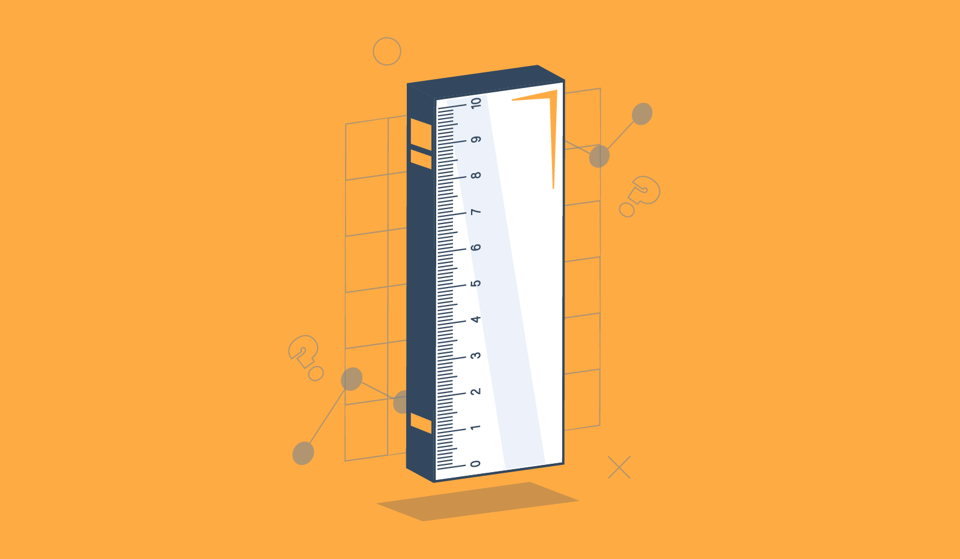1. Regularly track financial goals and benchmarks.
What details and data points will help you make decisions? Determine the right goals and track them to determine what success looks like. Some of your business goals might include:
-
Increasing your sales
-
Boosting your profit margin
-
Expanding your market share
One tool companies often use to set their goals is a balanced scorecard (BSC). Using a BSC model can help you identify, improve, and control aspects of the business by looking at four areas: learning and growth, business processes, customers, and finance.
Assessing KPIs
It's not enough to simply have goals or say, "I would like to accomplish X." You need to hold yourself—and your business—accountable. Outsourced CFO services can help you track those goals against various performance metrics or key performance indicators (KPIs). KPIs measure your performance toward achieving specific goals, usually represented as a ratio that reveals your progress.
We've talked about KPIs before, and the list is long—because you can measure just about anything. But here's a sampling of what we usually see businesses monitor:
-
Total sales
-
Revenue growth rate
-
Customer retention rate
-
Cash on hand
-
Labor cost to revenue ratio
-
Customer acquisition cost
How do your goals and KPIs line up? Is there some way to adjust to achieve better results if you're currently falling behind?
2. Compile comprehensive financial reports.
A key piece of measuring business performance—and your KPIs—is looking at what your paper trail tells you. Partner with outsourced CFO services to analyze your financial statements and track them consistently over time to show valuable trends, strengths, weaknesses, and opportunities.
4 Types of Financial Reports
You probably have endless streams of documentation and data, but a handful of reports take center stage when it comes to performance. Outsourced CFO services will compile four financial reports monthly, quarterly, and annually:
-
Income statements: Also known as profit and loss statements, income statements reveal financial performance over an accounting period and include revenue, expenses, gains, and losses.
-
Balance sheets: Your company's record of its financial history is a solid measure of performance, with data on assets and obligations, accounting transactions, net worth, business value, and debt situation.
-
Statements of cash flow: These statements reflect the two sides of money movement—cash generated and cash spent during a specified period—and might include operating activities, investing activities, financing activities, and supplemental information if your business is more complicated.
-
Statements of owner equity: Business value to an owner can change over time, so any changes in owner's equity between accounting periods are reflected on equity statements in three parts: beginning equity balance, additions and subtractions, and ending balance.
But don't skimp on your reporting. You need all four types of financial reports to really see your position, including an accurate view of your company's finances and potential areas of improvement.
3. Measure performance over time.
Speaking of improvement areas, you should check—and, if necessary, realign—your business goals over time to keep improving and drive profitability. Use your financial reports as a starting point, but consider weighing additional factors to measure performance for the long game.
Long-Term Performance Metrics
In the long run, you want to measure both financial performance and overall profitability. But you can't just shrug your shoulders and say, "Eh, we made money." Highly specific data points show what you're accomplishing or falling short on—over time:
-
Working capital: How much money do you have to work with? This measure of short-term liquidity is a ratio of current assets compared to current liabilities, and the higher the ratio, the more favorable for you.
-
Sales growth rate: Measure your ability to generate revenue over a fixed period—as expressed as a percentage change in sales over time—to reveal insights into future demand and signal to investors whether you're on an upswing or stagnating.
-
Financial leverage: How are you spending to pursue your goals? Financial leverage uses debt to finance assets in the hopes of capital gains that outweigh the cost of borrowing. Measure leverage by looking at your debt-to-equity ratio, debt to capital ratio, debt to EBITDA ratio, and interest coverage ratio.
-
Operating margin: Consider your company's revenues after factoring in operating and nonoperating expenses. How much wiggle room is there once you pay operating expenses?
-
Gross profit margin: Equally important, gross profit margin is the ratio of gross profit compared to your total revenue. This reflects the money you get to keep after production costs.
-
Net profit margin: Measure the ratio of net profit compared to total revenue. It considers all operating costs.
Get in the habit of reviewing finances at a set cadence to ensure you're up to date and can spot trends and changes.
Take the right steps to measure your business performance.
Goals, KPIs, reports, long-term metrics ... there's a lot to consider when you take stock of your business performance, and it goes way beyond simple dollars and cents. And if that seems intimidating, it's OK—outsourced CFO services can light the way. Let Ignite Spot take the reins and keep your business running like a well-oiled machine. Explore our service pricing to learn about the accounting services we offer and find your fit.













.png)




